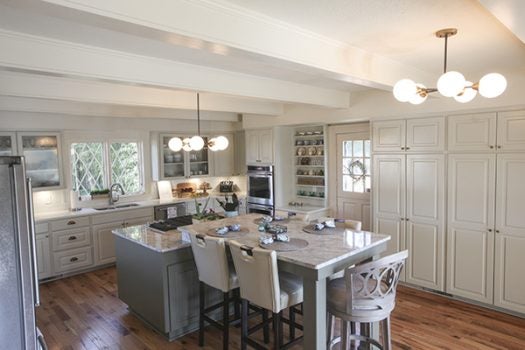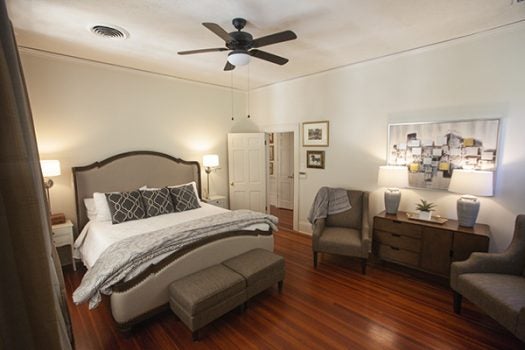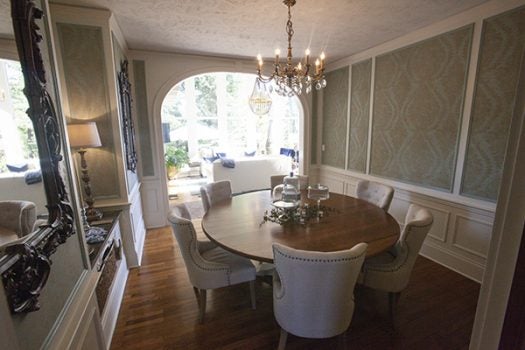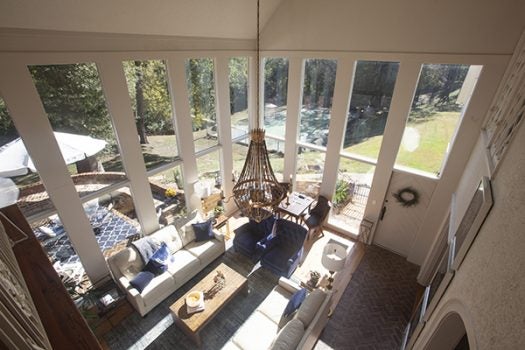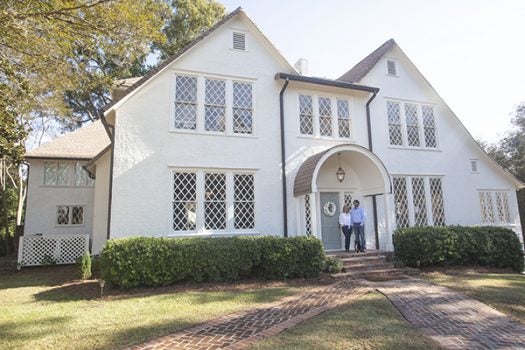WELCOME HOME: Local realtor falls in love with historic Polk Home
Published 3:12 pm Friday, February 1, 2019
Realtor Mary Jane Wooten is well known for her ability to buy, renovate and restore and flip, or resell, older buildings and homes in Vicksburg. It’s a process she has followed for several years, but when she bought the home at 2615 Confederate Avenue, something happened. The building flipped her.
“I bought it out of foreclosure in 2016,” she said. “When I walked in the house, I was going to buy it and flip it, but I just fell in love with the house. It took me a year to renovate it and I’ve been living here a year.”
Spend time in the home’s sunroom and look across the hills and woodlands that surround the house, or go to any room and see how they’re bathed in natural light and it’s easy to see why.
“I just love all the natural light,” Wooten said. “I don’t have any curtains on the windows because I believe the windows stand out by themselves. It’s a very private seven acres, because even though I’m right dead in the city, there’s no neighbors I can see.”
Part of the lure of the house, Wooten said, was its builder, P.M. Polk. He was a civil engineer who was a member of the first team of engineers to survey the land acquired for the Vicksburg National Military Park, which ran along the front of the home. The property, like many other sites along Confederate Avenue, still has a National Park Service marker indicating the location of a Confederate unit. According to the marker in front the home, it was the site of the 3rd Maryland Battery of Stevenson’s Division.
Polk bought the land, which was not part of the park, in 1922 and built the two-story, stuccoed frame Tudor Revival style home in 1924 for $18,000, or $266,194 in today’s money. He and his family lived in the home until they lost it in the Great Depression.
The house was bought in 1939 by J. Gilliland Sherard, former Warren County chancery clerk who served from 1921 to 1966. Sherard and his wife, Ruth bought the house for $9,000, and in 1967, Ruth Sherard sold the house and property to Dr. Martin Edward Hinman and his wife Elizabeth for $30,000.
The Hinmans did the first renovations to the house, with the first costing $40,000 in 1967. The renovation included a two-story addition with the kitchen on the first floor and a bath, closet and art studio on the second, and central air and heating. The sunroom was also built.
In 1974 a new roof was laid on the old, and in 1975 a tennis court was added.
They also removed a garage on the south end of the house and built a formal brick entrance from the drive to the home. The driveway off Confederate Avenue ends in a partial cul-de-sac by the house.
When Wooten bought the property it was overgrown, and a pecan orchard was covered with vegetation. The stucco was falling off the front of the home and had to be replaced.
“We uncovered all the pine trees and opened the pecan orchard. The tennis court was about to fall off the hill, and the hill was rebuilt and drainage put in,” she said.
“The house was originally four bedroom, one bath, and all the bedrooms were upstairs and the only bath was upstairs,” Wooten said.
The home now has three bathrooms upstairs, she said, referring to the Hinmans’ remodeling.
Also, after purchasing the property, Wooten said the sunroom in the home provided a challenge.
The sunroom the Hinmans built was 4 feet lower than the surrounding floors and accessible by stairs with a wrought iron railing. A fountain occupied the north end of the room.
“It was like the Hinmans’ outdoor room, but it really didn’t flow the way we like open floor plans. I wanted the kitchen to be open; I really wanted this to be our keeping room — sort of like a living space off the kitchen. And so I opened it up to the kitchen, because somebody’s always in the kitchen.”
The room’s walls, ceiling and joists, Wooten said, “Were rotten; it had been eaten up with termites. We tore it all out. We tore the whole room down and held up the roof, took out the staircase, moved the staircase outside.”
The walls and panels were replaced and the floor elevated to match the rest of the home.
A section of the eastern wall was rebuilt because it was rotten from water falling off the roof and splashing on the exterior wall.
Hardy Board, a concrete board that does not rot, replaced the wooden panels.
Outside the house, the patio area had a serpentine brick wall that originally held planters, Wooten said. The planters were removed and replaced with brick seating.
She moved the laundry room upstairs “because I didn’t want to have to carry laundry upstairs and downstairs,” and the original laundry room was converted into a bar with a half-bath and butler’s pantry.
An exterior window facing the sunroom and separating the kitchen from the sunroom was removed.
“It just didn’t flow right (with the window there),” Wooten said, “The kitchen just didn’t feel connected to the rest of the house. And because the staircase (in the sunken room) was in the middle of the room, there really wasn’t any room for furniture placement.”
The staircase was removed outside where a deck with a covered roof had been.
The tennis court was resurfaced. “I resurfaced the courts before I finished the house,” she said.
The tall windows in the sunroom and diamond inlaid windows throughout the house bathe its interior with natural light.
“What I’ve done to the house is fix it; redid the master bath, added a master closet, redid the kitchen, repainted it, redid the garden, spent a lot of money in dozer work to open it up to see acreage — all the ridges and hills open — and just redid the property to what I thought it was but tried to make it live like we live today. I just took an old structure and restored it to try and save it.”


